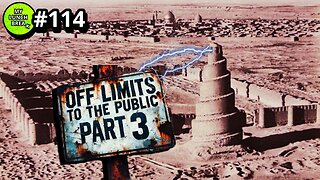Premium Only Content

How to find if virus single-stranded or double-stranded?
Virus Replication
Viruses are intracellular obligate parasites which means that they cannot replicate or express their genes without the help of a living cell. A single virus particle (virion) is in and of itself essentially inert. It lacks needed components that cells have to reproduce. When a virus infects a cell, it marshals the cell's ribosomes, enzymes and much of the cellular machinery to replicate. Unlike what we have seen in cellular replication processes such as mitosis and meiosis, viral replication produces many progeny, that when complete, leave the host cell to infect other cells in the organism.
Viruses may contain double-stranded DNA, double-stranded RNA, single-stranded DNA or single-stranded RNA. The type of genetic material found in a particular virus depends on the nature and function of the specific virus. The exact nature of what happens after a host is infected varies depending on the nature of the virus. The process for double-stranded DNA, single-stranded DNA, double-stranded RNA and single-stranded RNA viral replication will differ. For example, double-stranded DNA viruses typically must enter the host cell's nucleus before they can replicate. Single-stranded RNA viruses however, replicate mainly in the host cell's cytoplasm.
Once a virus infects its host and the viral progeny components are produced by the host's cellular machinery, the assembly of the viral capsid is a non-enzymatic process. It is usually spontaneous. Viruses typically can only infect a limited number of hosts (also known as host range). The "lock and key" mechanism is the most common explanation for this range. Certain proteins on the virus particle must fit certain receptor sites on the particular host's cell surface.
How Viruses Infect Cells
The basic process of viral infection and virus replication occurs in 6 main steps.
Adsorption - virus binds to the host cell.
Penetration - virus injects its genome into host cell.
Viral Genome Replication - viral genome replicates using the host's cellular machinery.
Assembly - viral components and enzymes are produced and begin to assemble.
Maturation - viral components assemble and viruses fully develop.
Release - newly produced viruses are expelled from the host cell.
Viruses may infect any type of cell including animal cells, plant cells and bacterial cells. To view an example of the process of viral infection and virus replication, see Virus Replication: Bacteriophage. You will discover how a bacteriophage, a virus that infects bacteria, replicates after infecting a bacterial cell.
-
 1:13:00
1:13:00
Patriots With Grit
6 hours agoWill Americans Rise Up? | Jeff Calhoun
3.68K3 -
 14:55
14:55
Exploring With Nug
6 hours ago $4.52 earnedWe Found Semi Truck Containers While Searching for Missing Man!
25.3K4 -
 27:57
27:57
MYLUNCHBREAK CHANNEL PAGE
13 hours agoOff Limits to the Public - Pt 3
47.7K49 -
 38:07
38:07
Michael Franzese
6 hours agoLeaving Organized Crime and Uncovering Mob in Politics: Tudor Dixon and Michael Franzese
41.2K13 -
 2:42:54
2:42:54
Jewels Jones Live ®
1 day agoAMERICA IS BACK | A Political Rendezvous - Ep. 111
39.1K39 -

Due Dissidence
1 day agoLIVE: Workers Strike Back Conference ft. Chris Hedges, Jill Stein, Kshama Sawant, and More!
81K50 -
 8:36:37
8:36:37
Right Side Broadcasting Network
5 days agoLIVE REPLAY: CPAC 2025 Day Three with President Donald J. Trump - 2/22/25
389K94 -
 1:05:34
1:05:34
The Big Mig™
14 hours agoConfirmed Kash Patel New FBI Director, Bring On The Pain |EP483
72.5K22 -
 53:59
53:59
Tactical Advisor
10 hours agoThe Vault Room Podcast 009 | Everyone Getting $5000?!
63.2K11 -
 2:04:44
2:04:44
TheAlecLaceShow
21 hours agoLive at CPAC | Interviews with Dean Cain, Rep. Comer and more! | The Alec Lace Show
74.7K4